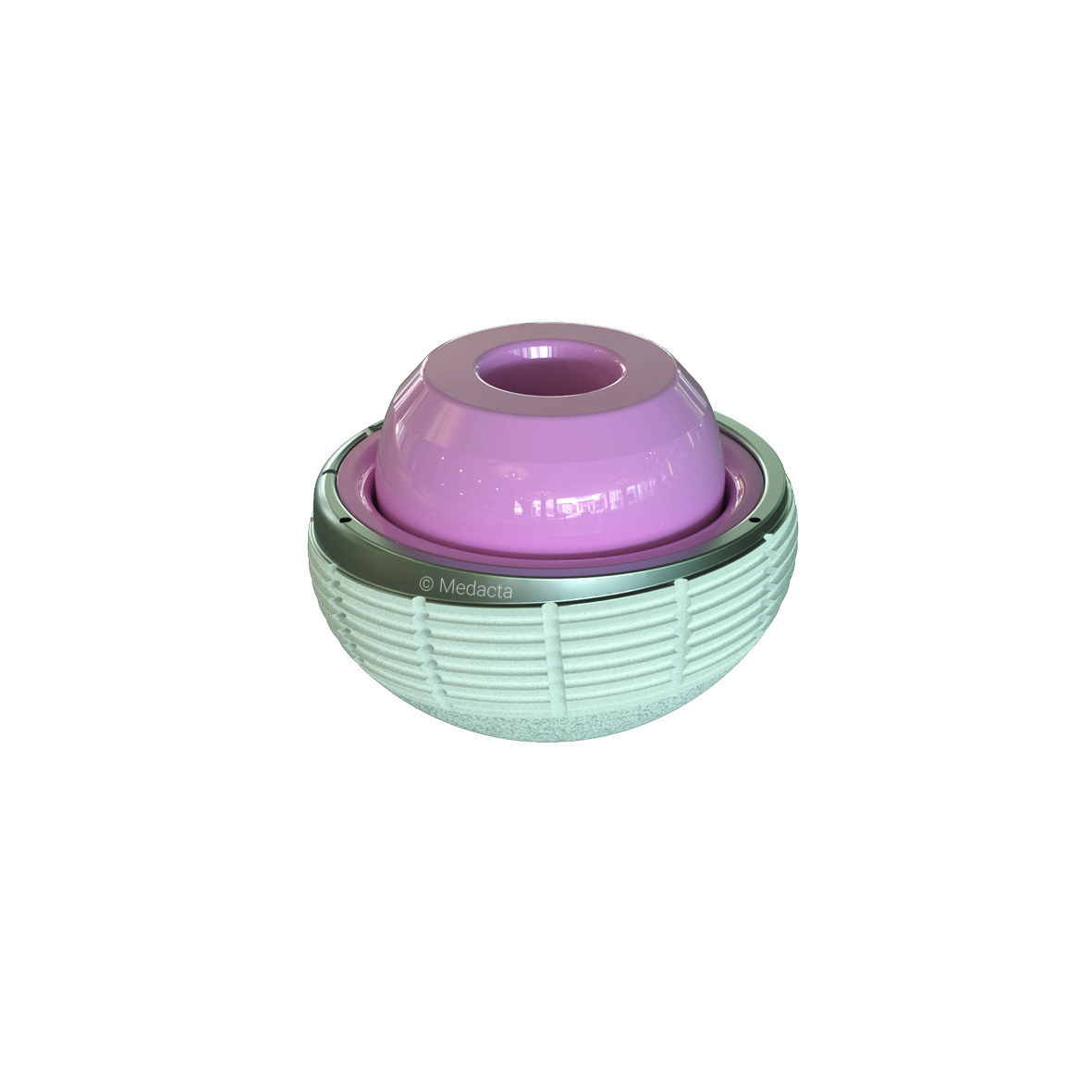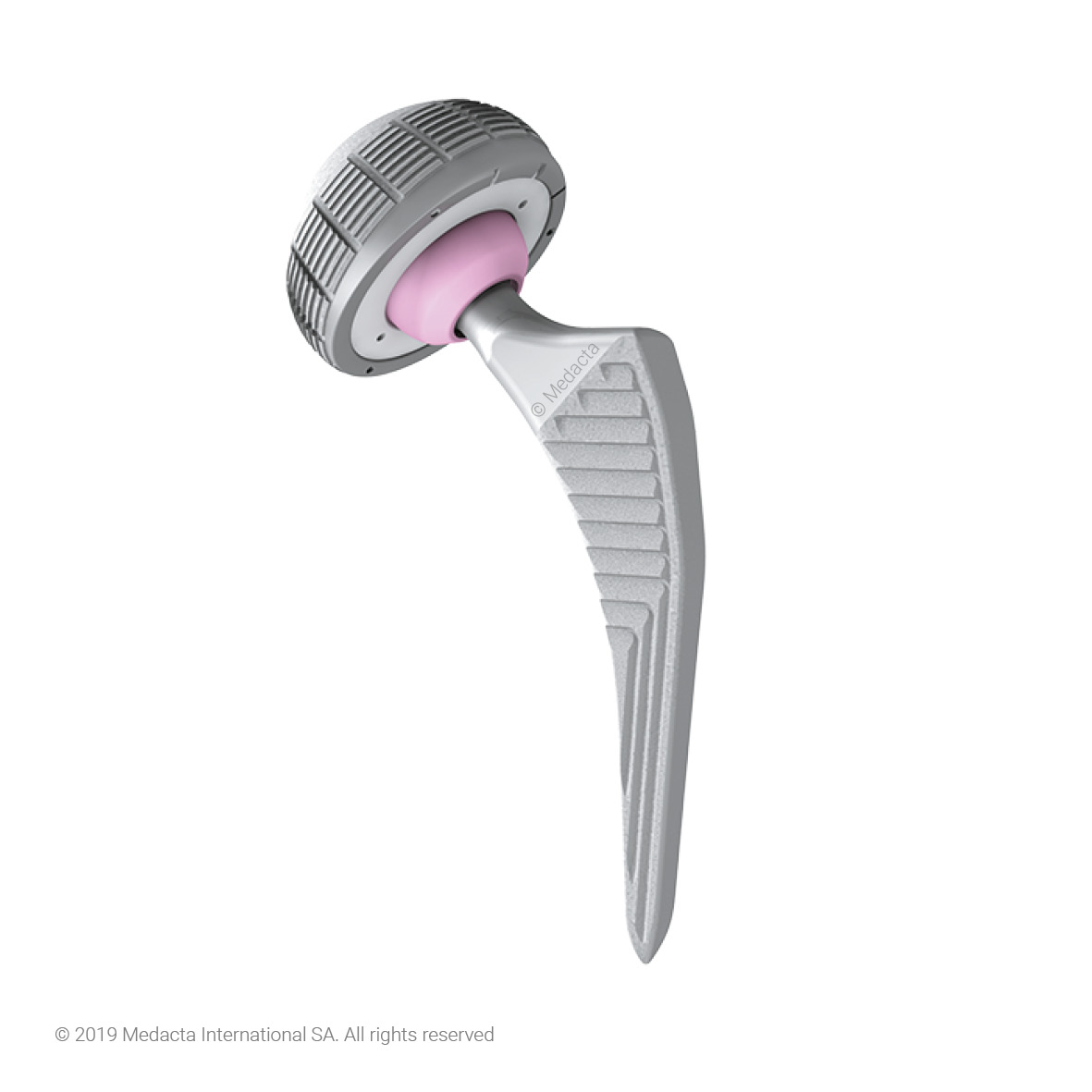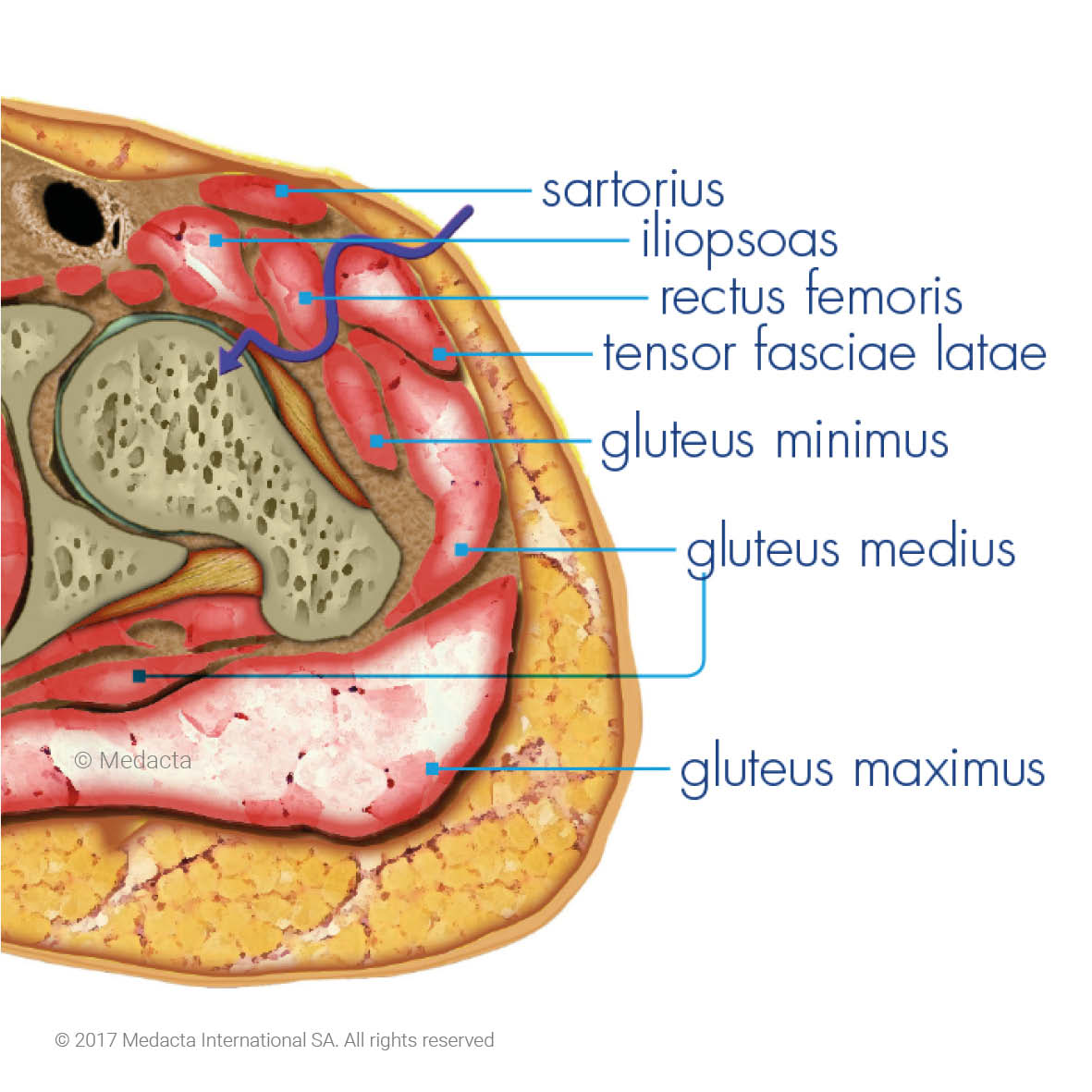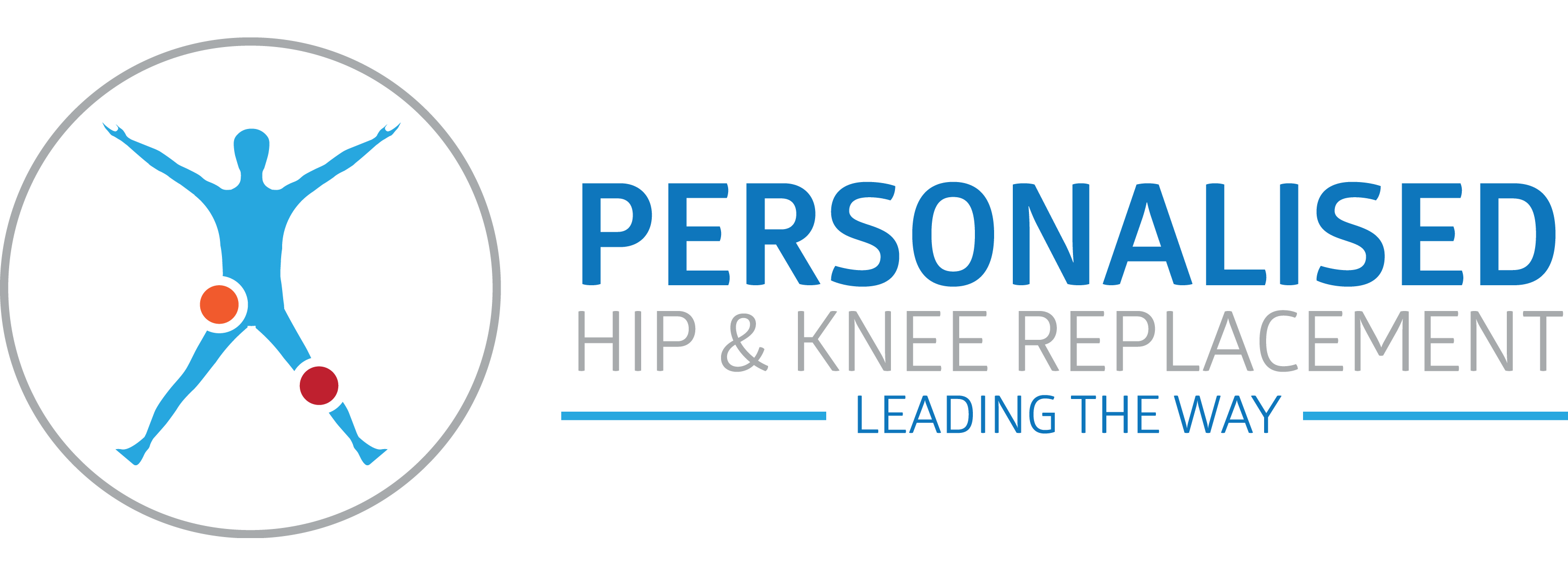Total hip replacement surgery – Anterior Approach (AMIS) and Kinematically aligned
Hip replacement surgery involves the replacement of a severely degenerated joint by a prosthetic joint or prosthesis. Hip replacements have been performed for over fifty years and are considered one of the most successful operations in the surgeon’s repertoire.
The most common reason for a total hip replacement is because of degenerative changes brought about by osteoarthritis (= degenerative process). Some people need hip replacements for other reasons such as rheumatoid arthritis (auto-immune disease) congenital condition and sometimes because of trauma of the joint.
Ideal goals of joint replacement are first to alleviate your symptoms for the longest time possible (ideally one surgery for life) and second to give you the best joint functional performance and feeling (ideally like a normal joint).
Hip joint replacements can be either ‘partial’ or ‘total’ depending on whether the joint is partially or totally replaced. Partial hip replacement can be illustrated by ‘femoral hemiarthroplasty’ performed on elderly patients with a femoral neck fracture.
There are many implant designs and techniques for fixation of implants in the bone. Each one has its specific pros and cons and is more suitable to a certain sub-group of patients. This is the reason why every patient receives a personalized treatement, with different combination of implant type, method of fixation, and surgical approach, in order to reach an optimal outcome for each patient.
Book a consultation:


Why choose Charles Rivière for your hip surgery?
Charles is at the forefront of hip replacement, pioneering new, personalised, physiological techniques of arthroplasty
His research leads the way in hyper specific, personalised implant positioning for hip replacements.
Every stage of Dr Charles Riviere’s hip replacement surgery is personalised:
This is decided based on a number of factors, for example, your age, physiology, joint anatomy etc.
Implant design takes a patient first approach, so the hip replacement will match the patient exactly, as opposed to a generic fit.
Dr Charles Rivière’s Kinematic alignment technique allows for a completely personalised surgical approach.
Following Dr. Rivière’s philosophies, the hip replacement procedure is set up to allow both a very low risk of revision, yet also an easy revision in the unlikely case that it’s needed.
What is the severity of your hip disease?
Find out your Oxford Hip Score and know the severity of your hip disease. It may help you decide whether to see a surgeon for an opinion.
When is the right time to have joint replacement surgery?
Joint replacement is generally considered when the patient is experiencing pain and stiffness which is severe to restrict work, recreation, activities of daily living, and therefore substantially affecting the quality of life. Painkiller and anti-inflammatory medications, physiotherapy and the use of walking aids can be used at the early stage of the condition but when a time is reached when they can no longer relieve the pain or restore function.
Implants’ quality and techniques have vastly improved and made hip replacement procedures last much longer. This means that the option of surgery can now be considered much sooner.
The right time to have a hip replacement is when the pain you experience is interfering with your life and you really want something done about it. It’s a personal and very subjective decision. I always advise patients to take their time, really think it over and have surgery when it suits them.
Your implant positioning will be unique and determined after an assessment of your pelvic motion. This enables Charles to decide the best implant design and implant positioning to reduce risks of complications such as dislocation or accelerated prosthetic wear. This new surgical technique is known as “Kinematic Alignment Technique for Total Hip Replacement”.
For simple primary hip replacement Charles performs mini-invasive surgery, either from a direct anterior or a mini-posterior approach. This is to respect soft-tissue as much as possible, which will provide the patient faster recovery, earlier hospital discharge, and better hip function. However, if the surgery is difficult and larger surgical exposure would make the surgery safer, then Charles would not hesitate to extend the wound – remember, safety and efficacy always first!
The direct anterior approach is a short and muscle-sparing approach. The mini-posterior approach is also short but it is necessary to cut a few muscles which need to be repaired at the end of surgery and necessitate post-operative precautions. Safety of the operation and reproducibility in reaching good clinical outcomes are always the priority, therefore Charles will decide the best approach for each patient. Both approaches can provide very good results but the direct anterior approach has many advantages:
- Faster recovery
- Better comfort of life during the first 6 weeks after surgery as there is very low risk of dislocation and the absence of muscle repair makes restriction in hip motion not necessary
- Higher hip function (no firm evidence)
- Lower risk of dislocation (no firm evidence)
- Better aesthetic with the “bikini incision”: oblique anterior incision that is hidden in the groin crease and can be easily covered with underwear. This is often important for women.
There are many causes of failure for joint replacement (see “risk” section). Improvements in implant quality and surgical techniques over the last decades have dramatically reduced the rate of complications after hip replacement.
Based on the most recent historical data a modern hip replacement has about a 6.5% chance of requiring revision surgery in a decade. Risk for the second decade may be the same or may be greater or less than 6.5% but we don’t know.
Unfortunately, we have even less evidence with the most modern implants and techniques, but it is likely that half of the hips we perform today will last several decades. Life of an individual hip has been shown to be dependent on the prosthesis design, the activity level of the patient and the skill and specialisation of the surgeon.
Charles uses a wide range of implant designs and material. When he selects a type of implant it is always in the patients best interest in order to optimise the outcome of the replacement.
Hip replacement is a major surgery. Complications associated with the procedure are rare but can still occur. The most common are not directly related to the hip itself but to surgery in general and the physiological changes it has on your body. You need to be fully aware of those risks before making your decision to proceed with an operation.
Do not hesitate to ask questions of your surgeon, anaesthetist or of other medical specialists who are managing your health in the lead up to your surgery. If you do not understand what you have been told, do not hesitate to seek clarification from us.
The vast majority of people get through the surgery with no problems at all and will be surprised at how good they feel so soon afterwards. Some will experience minor issues and occasionally there may be more serious complications. These problems are rare and most can be treated quickly and effectively.
Patients are generally up and walking within 6 hours of the surgery and stay in hospital for 1 to 5 days. The important things in the early postoperative period are to get moving and to allow the wound to heal. Moving the operated joint early will result in a better range of motion in the long run and getting up and walking prevents blood clots, constipation and lung problems.
To get the best possible long-term result from your hip the time and effort spent in the immediate 4 weeks postoperative period is more valuable than any other time. During this time your body will be healing its soft tissues (muscles) that were cut through at the time of surgery and it will be getting used to working with its new joint. At the end of the 4th week after your surgery, probably 80% of the recovery will have taken place. The remaining will take up to a year.
It is a good idea to use crutches or a walking stick for the first 4 to 6 weeks after surgery although this is not an absolute requirement.
The 3 phases of recovery following hip replacement:
Phase 1: First 6 weeks
- Improvements seen on a day-to-day basis.
- This is when you need help after surgery.
Phase 2: Next 8 weeks
- Improvements on a week-to-week basis.
- You are only 85% improved at 3-month.
Phase 3: Final 9 months
- Improvements occur on a month-to-month basis.
- This means that warmth about joint, aches and pains are going away and this is when you get stronger and get more endurance.
Remember: It takes a whole year of recovery after joint replacement!





